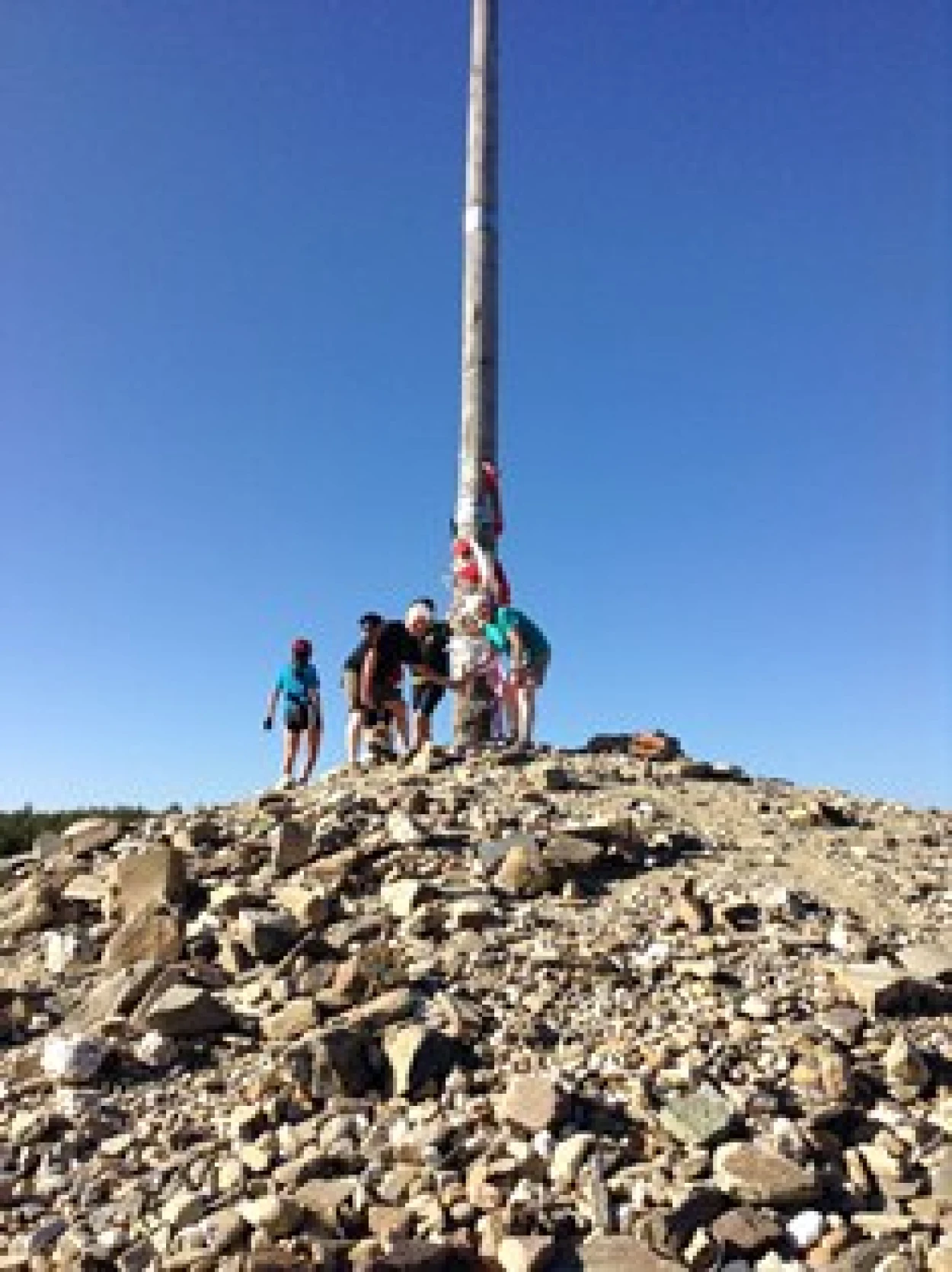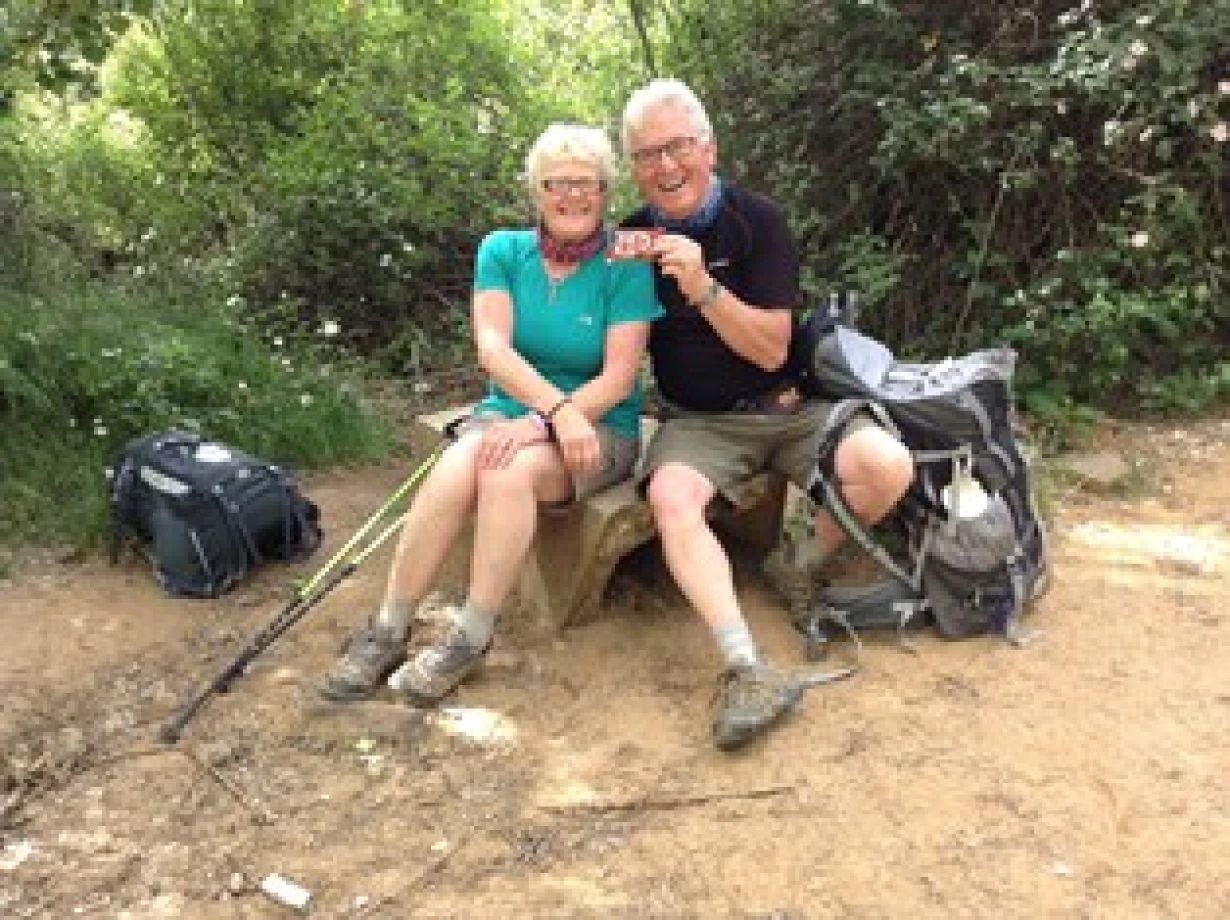500 miles on the Camino with John and Linda Cunningham
Why would anyone in their right mind want to walk 500 miles across France and Spain?
“In that question may lie the answer,” says the rector of Ballymacarrett, Revd John Cunningham, who with his wife Linda, walked the Camino for the second time in May this year. He takes up the story below:
“Linda and I had experienced two difficult years, no worse than many others, but our daughter had been diagnosed with a brain tumour, my wife’s mother endured terminal cancer and we had survived a fairly serious car accident. Added to this, our parish was at the epicentre of the flag riots and the endless nights and Saturdays had all taken a toll.
“We were more than due a break as a result of all these occurrences and so we felt called to revisit an experience that we had found to be challenging refreshing and renewing and that left us in touch with ourselves, each other and God. We would walk the Camino de Santiago.”
Also known as ‘The Way of St James’, the Camino follows an ancient pilgrimage route with several starting points, but they all lead to the cathedral in the city of Santiago de Compostela in northern Spain.
The cathedral was believed to hold the relics of St James the Apostle and was the third of the great pilgrimages, the other two being Jerusalem and Rome. It is believed that millions made their way to the cathedral during the Middle Ages and today around 250000 from all over the world, make the journey each year. Their reasons are varied and often have nothing to do with faith or religion.
“Many do various stretches of the journey, continues John. “Mainly the first two weeks, or the last two weeks, but we believe that to get the full reward from the pilgrimage it is best to complete the entire 500 or so miles. The time and the distance, not to mention the peace and stillness of the mountaintops, make for a deeply enriching experience.
“And so on the 14 May, St Mathias’s Day, the day of my ordination 15 years earlier, we set out from St Jean Pied de Port in France to go over the Pyrenees and that afternoon we booked into an renovated monastery, in Spain, for the night.

“We travelled through cities such as Pamplona, Logrono, Burgos, Leon, Ponferrada, and Sarria, but it was the rural towns and villages which made the journey for us. It is the journey – physical, mental, and spiritual, it is the people you meet, and friendships that are created which are the Camino. It is the stillness of the Pyrenees, the Navarran forests and rivers, the Riojan vineyards, the endless sky of the Meseta and the mists of Galicia which are memorable and leave their mark.
“One humbling aspect of our journey was that we walked on Roman roads. The pavement beneath our feet was where soldiers and rulers walked bringing hatred and hurt, but also where St Frances and other saints walked, bringing love in their wake.
“At the highest point of the journey there is an iron cross around 50ft high surrounded by millions of pebbles and stones brought by countless pilgrims. These represent their burdens and sins which are placed at the foot of the cross. At this cross we placed a golf ball picked up by Linda in the grounds of our church.The ball had been thrown at police officers during the riots last year and it represented one of the burdens of our parish.
“Part of our journey was to think about and raise money for our year of mission and this was very successful. The peace and tranquility gave us space, the experience gave us inspiration and our parishioners faithfully sponsored us.
If anyone would like to learn any more about the Camino, please feel free to contact us. But be warned, I can bore for Britain on this subject!”
Email John at revon50@aol.com.
Camino stories or photos of your own? Email or tweet them to us #ddcamino
